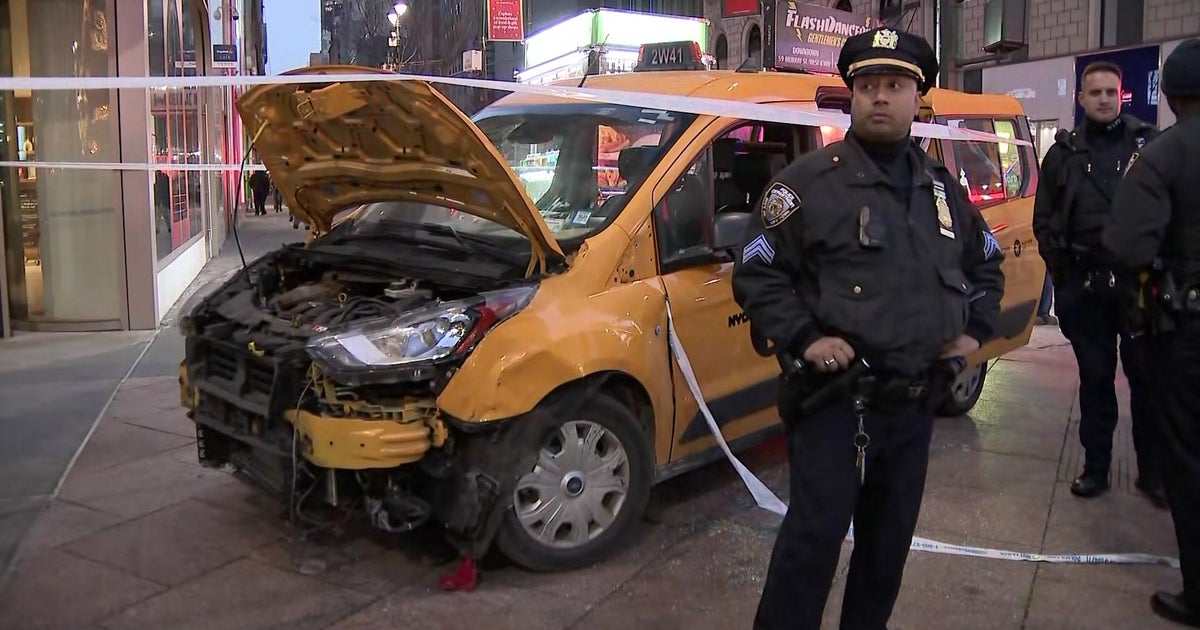The best places to see today's solar eclipse in NYC and across New York state
NEW YORK -- The 2024 total solar eclipse darkened the sky across the United States Monday, with Upstate New York right in the path of totality and NYC and New Jersey seeing a partial solar eclipse.
CBS News New York streamed live coverage of the event from 2 to 4 p.m. with Chief Weathercaster Lonnie Quinn in Lake Placid and CBS2 News at 5 Anchor Kristine Johnson in Niagara Falls, along with reporters across New York and New Jersey.
- What time does solar eclipse start, peak and end in New York?
- Solar eclipse 2024 live updates and scenes from the path of totality
Best places to watch in New York
New York is home to America's oldest state park, Niagara Falls. The 400-acre park and its rainbow skies will be right in the path of totality and has several events planned. The state's tourism site recommends watching from Prospect Point or Goat Island, or driving about 10 minutes north to Whirlpool State Park.
The site also lists viewing spots in the Adirondacks -- from one of the Olympic Legacy sites in Lake Placid to the Adirondack Sky Center and Observatory in Tupper Lake.
In the Chautauqua-Allegheny region, try Allegany State Park, the state's largest with beaches and camping available. Or explore Griffis Sculpture Park, featuring 450 acres of 250 sculptures.
By Thousand Islands-Seaway, the site recommends historic sites, like Tibbetts Point Lighthouse, Fort Ontario, Sackets Harbor Battlefield and Fort de La Présentation.
Finally, in the Finger Lakes, Rochester is hosting a weekend of events, with viewing locations at Rochester Museum and Science Center and the High Falls. Fair Haven Beach, Letchworth, Green Lakes and Seneca Lake state parks will all have waterfront views, too.
Where does the eclipse path of totality cross New York state?
The path of totality spans 124 miles across 29 counties in New York, starting in the southwest and traveling northeast. It covers thousands of cities and smaller towns, including:
- Jamestown
- Buffalo
- Rochester
- Geneva
- Seneca Falls
- Syracuse
- Watertown
- Potsdam
- Lake Placid
- Plattsburg
Niagara Falls and several other state parks fall within the path, and many opened their campgrounds ahead of schedule for the eclipse.
"The epicenter that the world will be watching will be in the great state of New York," Gov. Kathy Hochul said last month, as state officials prepared for the big event. "We have been preparing for this for many, many, many months, and getting people excited. This has been great for our tourism, it's going to bring in thousands, if not millions of people, to localities all along the trajectory of this."
Things to know about traveling to New York's path of totality
New York state officials encouraged visitors to "Come for the Eclipse, Stay for New York" and book extended stays in the area to avoid pre-and-post-eclipse traffic.
"We want to really be prepared for this, take advantage of this exciting moment -- this is New York's chance to be in the sun and limelight -- and to make sure that we all do this in a smart, healthy way that people remember for generations to come," Hochul said during last month's briefing. "We saw from the last experience many years ago that there were a lot of traffic jams and people running out of gas. We're not going to let that happen in New York, because we're New Yorkers and we'll be prepared."
Drivers should make sure they have enough gas or electric charge, as well as water, snacks and emergency blankets.
The state's Director of Operations Kathryn Garcia said agencies are treating this like a "weather event or mass gathering event," with a statewide public safety plan that deploys extra staff and equipment.
"If you are planning on traveling to one of these locations, we cannot stress enough: Leave lots of time. We anticipate that there will be hundreds of thousands of visitors, and there will be many large events planned," said Garcia. "Not only are we expecting all of these visitors, but the timing of the eclipse, obviously, in the late afternoon, overlaps with our everyday rush hour. This is a recipe for severe congestion."
Drivers are not allowed to pull onto the shoulder of two-lane roadways to watch the eclipse. Officials also warned cellphone service could be impacted, but 911 will continue to work even if the grid is overwhelmed.
What is the cloud cover forecast for New York on April 8?
The forecast is a little iffy for the path of totality in Upstate New York. Springtime brings an array of weather to the area, like a Nor'easter that just dumped snow in parts of the Adirondacks.
Gray skies and cool temperatures are the norm, but no major systems are in the works. However, there is still about a 40 to 50 percent chance of clouds marring the view.
The forecast looks brighter in New York City, where a high pressure system is expected to bring a dry, sunny day with highs around 64.
What will the eclipse look like in NYC?
During the eclipse, the moon will cast a shadow on the Earth as it rotates, called the path of totality. Places within the path will see the moon fully cover the sun for approximately 2 to 4 minutes.
New York City is not in the path of totality, but will still experience a partial solar eclipse. The moon is expected to cover about 90 percent of the sun.
"If you're located along the path of totality, what you're going to see is the moon completely block out the sun, and that means you'll be left with views of what we call the corona, the upper atmosphere of the sun," NASA's Deputy Director of Paleo Physics Dr. Gina DiBraccio told CBS News New York. "If you're not within that path of totality and you're within the 48 continuous U.S. states, you'll still experience a partial eclipse, which means that you won't see the moon fully blocking the sun, but you'll get to experience part of that."
The partial eclipse will peak at 3:25 p.m. across the five boroughs, lasting no more than a minute. Staten Island will get the first glimpse, with the peak starting around 3:25:11 p.m. in Tottenville. The eclipse will exit northeast through Queens, where the peak starts around 3:25:59 p.m. in Glen Oaks.
Where to watch the eclipse in NYC
New York City's iconic landmarks are celebrating with special events, like sky-high views from the Empire State Building, One World Trade Center, The Edge and Top of the Rock.
The Intrepid Sea, Air & Space Museum is hosting a viewing onboard its flight deck, and the American Museum of Natural History will have educational activities with astronomy experts. The New York Hall of Science is also throwing a family-friendly educational event.
The Parks Department is holding free watch parties across the five boroughs, and Shirley Chisholm State Park will have a hike up to its highest point. The Brooklyn Botanic Garden is also opening its lawns for a free community viewing, and Green-Wood Cemetery will have telescopes fitted with solar filters.
When was the last eclipse that was visible in New York?
The last total solar eclipse that was visible from the U.S. happened back in August 2017, and it was the first to pass over the entire continent in nearly 100 years. The next total solar eclipse won't be visible from the U.S. for more than 20 years.
New York was not in the path of totality for the 2017 eclipse, and saw about 70 percent coverage. The state recorded its last total eclipse in 1925, and it is expected to be back in the path of totality in 2079 and 2144.
Another total eclipse will be visible from Greenland, Iceland, Portugal and northern Spain on August 12, 2026.



